How Can We Help?
5.9.35.9.3
We are pleased to announce that version 5.9.3 (4.28.3) of Pure is now released
Always read through the details of the release before installing or upgrading to a new version of Pure
Release date: 6 September 2017
Hosted customers:
- Staging environments will be updated 6 September 2017 (APAC + Europe) and 7 September 2017 (North / South America)
- Production environments will be updated 6 September 2017 (APAC + Europe) and 7 September 2017 (North / South America)
Be aware of the Upgrade Notes - failing to adhere to these may result in loss of functionality
PARTICULAR ITEMS TO NOTE WITH THIS RELEASE: POTENTIAL LOSS OF FUNCTIONALITY
SciVal, Scopus, and Embase switching to HTTPS
- SciVal, Scopus and Embase integrations will switch to an encrypted connection using HTTPS instead of using HTTP in the end of September 2017. This is reflected in Pure from version 5.8.3 on for SciVal and 5.6.0 for Scopus and Embase. Customers running on earlier versions may need to address. If you are running Pure version 5.8.3 or later from September on, this will not affect you. If you run an earlier version, you may need to address this, to retain functionality. See here now.
Content validation
You are generally encouraged to check all content in the re-validation workflow step prior to upgrade as changes to the underlying datamodel may not be reflected in the re-validation overview screen (see example)
Further, you are encouraged to check if all content can validate prior to an upgrade of Pure. This check is done by running the Check content and files job and resolving any data validation issues that are flagged by the job
Installation and downloading
See the Request Pure distribution file page for information about how to request a new version of Pure
Other Resources and Links
If you have problems with this release please contact Pure Support to get help
Pure hosting requirements
See the Pure Requirements page for more information about the current hosting requirements for Pure
1. Reporting module
As we continue building out the full feature set in the new Reporting Module, this release includes some new features.
1.1. Enhanced filtering
When originally released in 5.9, the new Reporting Module Technology Preview included only limited filtering options. We have now expanded these, and will continue to deliver more filtering options in upcoming releases.
Persons:
- FTE (as of today), as an Interval Filter
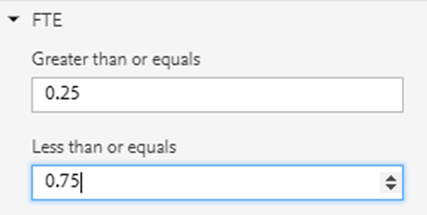
Research Outputs:
- Peer review
- International peer review
- First contributor (Internal / External first author)
- Last contributor (Internal / External first author)
- Externally published
 |
 |
1.2. Additional content type : ERA2018 (Australia)
We have expanded the content types available in the new Reporting Module to include ERA2018 content (relevant only to Australian customers). With the ERA2018 submission deadline fast approaching, we want to ensure that users are able to accurately and easily report on ERA2018 data.
This release includes the following content types:
- ERA Researchers
- ERA Research output
- ERA Portfolios
(Note that reporting content by FoR will be improved in the 5.10 release)
Connections between content types (i.e. semantic relationships) have also been extended, enabling you to more easily report on the detail of items associated with your driving content type:
- ERA Research output ↔ Research Output
- ERA Person ↔ Person
- ERA Portfolio ↔ ERA research output
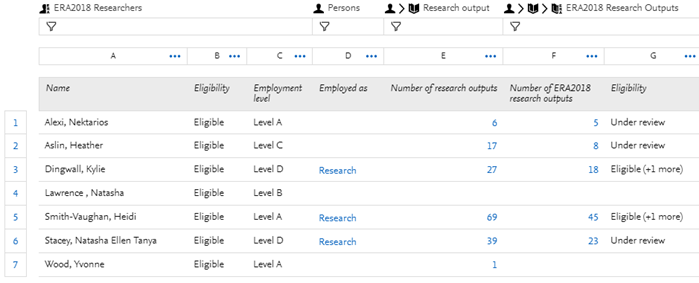
Filters are also available on ERA2018 content:
ERA Researchers |
ERA Research Output |
ERA Portfolios |
|---|---|---|
| Created | Created | Created |
| Eligibility | Eligibility | Eligibility |
| Reason (tied to Eligibility) | Reason (tied to Eligibility) | Reason (tied to Eligibility) |
| Employment level | Nominated for Peer review | Nominated for Peer review |
| Employment status | ERA Output Type | |
| Researcher function | ||
| FTE at census date |
2. Australia : ERA2018 module
2.1. Reporting on FoR assignments and % apportionments
In this release we have improved the reporting of FoR assignments and % apportionments such that each FoR and its associated % apportionment are reported out in separate cells and it is clear which % apportionment applies to which FoR. This will make it much easier to produce the import files for bulk editing FoR assignments, as per functionality delivered in 5.9.2.
Note that this is only currently available in the old Reporting Module. We plan to extend this in 5.10.0 to the new Reporting module as well.
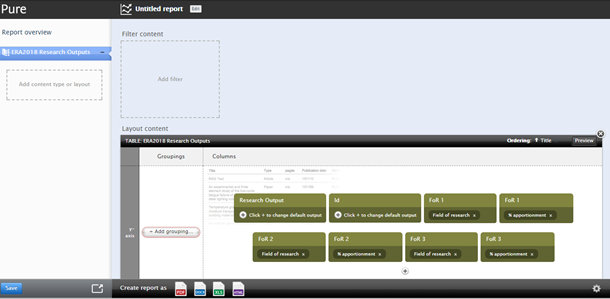 |
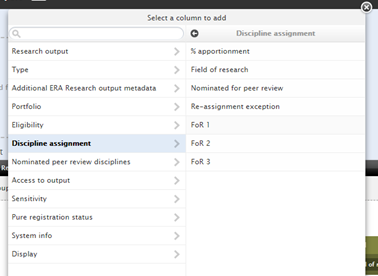 |
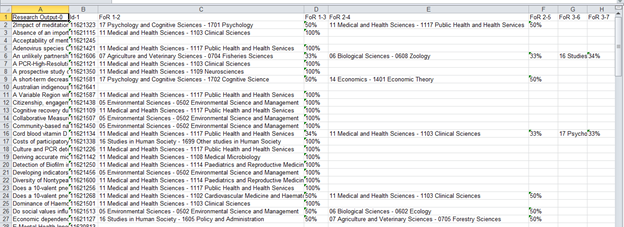 |
Published at December 01, 2023
